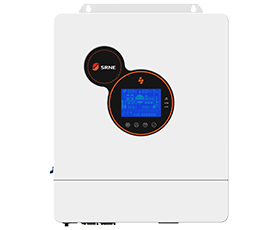The Differences between Single-phase Inverter and Three-phase Inverter
Inverters are used in solar systems to convert DC power from solar panels into AC power. When you start exploring your options for inverters in your solar system, you may probably hear the words “single phase” and “three phase” bandied about and wonder what on earth this means. In this article, we will explain what they are and talk about the differences between single-phase inverter and three-phase inverter.
A single-phase inverter is fairly obvious. It converts the DC power generated by your solar panels into a single phase of AC power that you can use. This is how your home or business is able to make effective use of the energy generated by your solar panels.
A three-phase inverter is on the other hand can produce three-phase power from the PV modules and can be connected to the three-phase equipment or grid. A three-phase inverter converts the DC input from solar panels into three-phase AC output. This inverter is commonly used in high power and variable frequency drive applications such as HVDC power transmission.
What are the differences?
Here are the main differences between the two:
Single-Phase Inverter
They are typically used in most new houses and small businesses, single-phase electricity is transported via two wires: active and neutral. The electricity from the grid or your solar PV system will only flow through the one active wire, while the neutral wire is connected to the earth at the switchboard. The purpose of your home or business’ neutral wire is to provide a path back to your switchboard, the source of the electrical current, in the event of a fault. This will trip the breaker or blow the fuse, cutting your electricity and preventing you from getting electrocuted.
Three-Phase Inverter
Three-phase power has four wires, three of which are active, in addition to one neutral wire, which is earthed at the switchboard. Three phase electricity is common in both larger homes and businesses, as well as older homes, and allows for smaller and less expensive wiring, and lower voltages.
How do I find out if I have single or three phase power?
First, you can check your switchboard. If the main switch is one-pole wide, then your home is connected to a single-phase power supply. If the main switch is 3 poles wide, you have 3-phase power. Alternatively, you can call your electricity provider and ask them about the power supply. Just keep a copy of your electricity bill handy. Third, you can also check the service fuse. Homes connected to a single-phase power will have one service fuse while for a 3-phase power supply, there would be 3 service fuses.
Which one should I choose?
If your property has single-phase power, then you will also need to ensure you install a single-phase inverter. In most states, if your property is single-phase, you can install an inverter up to 5kW in size. You can speak to one of our energy consultants to decide which solution would be most appropriate for your needs.
If you own a property with three-phase power, you’re technically able to install both single-phase and three-phase compatible inverters. However, network operators will not allow an imbalance across the phases, you’ll either have to install three single-phase inverters for each phase, or one three phase inverter that will work across all three phases.
While there is no limit to the size of the inverter you’re allowed to install, in many states your network provider will approve installations over 5kW on a case-by-case basis.
Both single-phase inverters and three-phase inverters have roles for which they are well-suited. Understanding well the differences between these two kinds of inverters is helpful for solar installers to choose what is suitable for them.



































































































